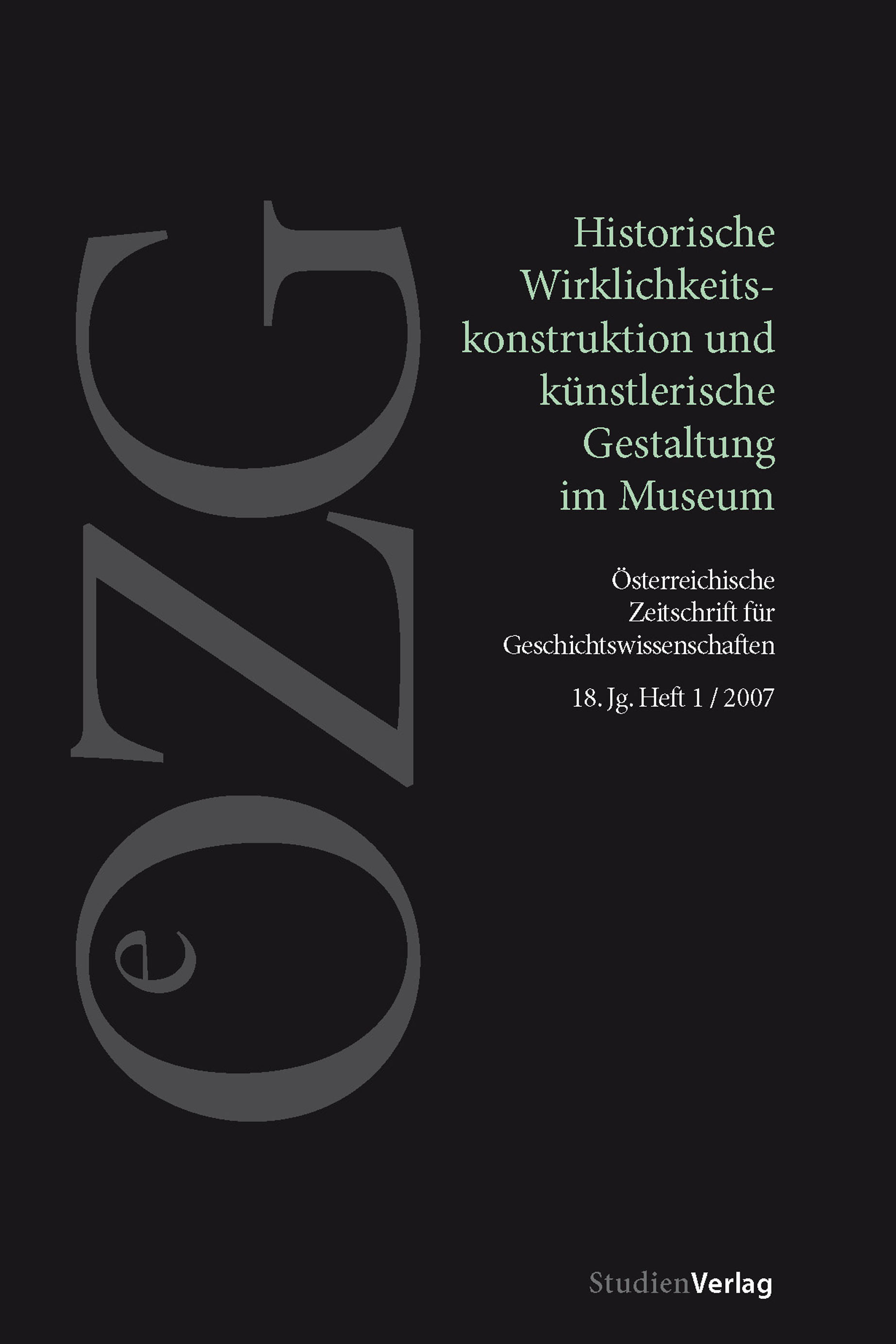Museum constructions of reality due to Stimmungsräume
Zur Wirkungsweise des historistischen Märkischen Museums Berlin vom Architekten Ludwig Hoffmann
DOI:
https://doi.org/10.25365/oezg-2007-18-1-5Abstract
The notion of »Stimmungsraum« is firmly established in the field of art as well as in the one of museum’s science. This was already the case before the discussions of scenographic stage forms and immersion in the field of exhibition design started. Nevertheless there are in its different disciplines major differences in dealing with the creation of a Stimmungsraum as well as in its effects. In this article, the artist Berit Schweska, who often creates her art pieces as emotionally impressive places, takes over a historical idea and compares it to the idea of an immersive construct. The theme of her historical analysis is the Märkische Museum in Berlin. In a short introduction the article describes the design method of the architect and planning department surveyor Ludwig Hoffmann. Between 1898 and 1904 he conceived the Märkische Museum on his own. Its main focus will be the overall plan of the so called Stimmungsmuseum, a museum having a close connection between its architecture and collection. Following this line, the focus lays also on the museums interior design and »Erfahrungsstruktur«, built upon a labyrinth structured museum tour, and its effect. This is followed by the self-analyses of the architect and his didactical approach as well as by voices of the time. Images and thoughts to younger pieces of work of Berit Schweska will show that the artists Stimmungsräume do not have a lot in common with the ones of Ludwig Hoffmann, especially in terms of his historical and historicist approach. Far away from a collection of history loaded objects in pseudo-historical rooms, she is dealing with emotionally loaded places without any allusion and specific time references.


